


Keeping tattoos looking good won’t get done automatically, tattoos need to be looked after carefully. The aftercare starts in the tattoo shop by your tattoo artist, right after your tattoo is done. It’s very important to not to remove the plastic wrap or Saniderm for a couple of hours, as it’s protects the open skin from bacteria, sunlight, and from friction.
Don’t worry, if the tattooed skin is a bit reddish for the first couple of days. The colors will become less vibrant also, as the healing process continues. Please avoid submerging the tattoo in water or getting the tattoo wet during the first 3–6 weeks, except for when washing it. Washing frequency varies depending on a person’s activity levels and environment. If you’re sitting in an office all day, you may only need to wash the tattoo 1-2 times a day. But if you’re working in a hot or dirty environment, or sweating all day, you may need to wash the tattoo every few hours.
“It is best to gently wash the tattoo with clean fingers only, without irritating the skin and prematurely remove any scabs that may have formed. Scabs often form in the first few days, and ink may still come up through the skin and need to be washed away. It is important not to pick the scabs or scratch the skin. Any redness or mild swelling usually goes away near the end of the first week.”
Around the beginning of the second week, the scabs will start to flake off. Please, be especially gentle with washing and moisturizing during this week, as it is easy to tear away scabs and damage the tattoo. The skin is likely to feel very itchy during this week, but it must not be scratched. Use some moisturizer – refrigerated moisturizer helps more – to relieve the itch.
The outer layers of skin should completely heal by the end of week three. Most of the scabs have flaked and fallen away by now, the rest and bits of dead skin may appear, but these will also clear up as the healing process continues. Scabs and flaking skin can cause the area to look dry, so apply some moisturizer, and protect the tattoo from the sun. The chance of infection is reduced once the outer layers of skin have healed, as there is no open wound for bacteria to infect.
In the following months moisturize the tattoo regularly, this will help keep it looking bright and clear. It’s extremely important to protect the tattoo from the sun while it is healing, and to apply sunscreen after it has healed, especially in the first few months.
Source: https://www.medicalnewstoday.com/articles/319980.php
Photo: pixabay
The very first step of getting a tattoo is to do some research to find the right tattoo artist. But what are the sign of finding the best one? How to find a good studio? And what to avoid?
First of all, use the most valuable resources to find a good artist: your friends’ recommendations. There’s no such efficient marketing campaign so far, that would beat your friends’ recommendations. Word of mouth is still the most valuable asset that you can have, when looking for a good tattoo studio. And it works the other way around: it also helps you to avoid the worst ones.
Of course, use all social media platforms for research, but be careful. Don’t let super shiny profiles, a fancy interior or the number of followers mislead you, look for the works instead. Check the artist’s previous works and be a little strict, don’t compromise on quality. Consider the style of the tattoo that you’re going to get also. For example, if you want something old school, maybe you should look for someone who’s the expert of this style.
If you found the right studio/artist, visit the place and check if the parlor is clean and fits the standards. Hygiene is a high priority, make sure that the person who will work on your skin uses the minimum criteria when it comes to health and safety; check if the artist uses gloves, sterile needles, and is very picky about cleanliness.
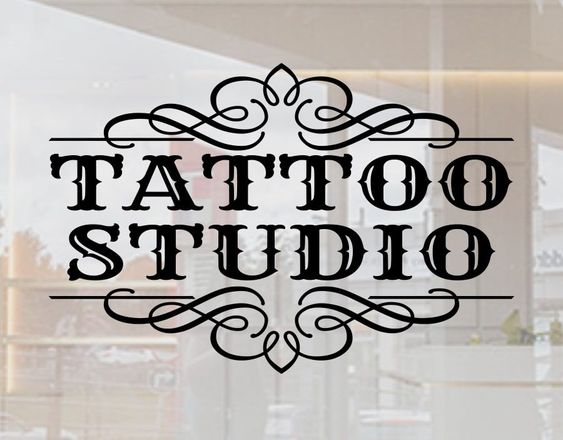
Archaeology showed that the origin of tattooing goes back way before the third millennium B.C. but started to become more and more popular in the western world after the renaissance era. When Captain Cook discovered Tahiti, and brought us the word ‘tatau’, the whole western world had become influenced by the new trend spread by soldiers, sailors and adventurers.
The first documented tattoo artist in Britain was Sutherland Macdonald, in the late 19thcentury, and he fought for the idea that tattooing is a form of art. Check out his classic works below:
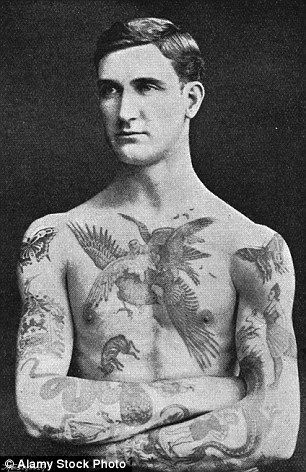
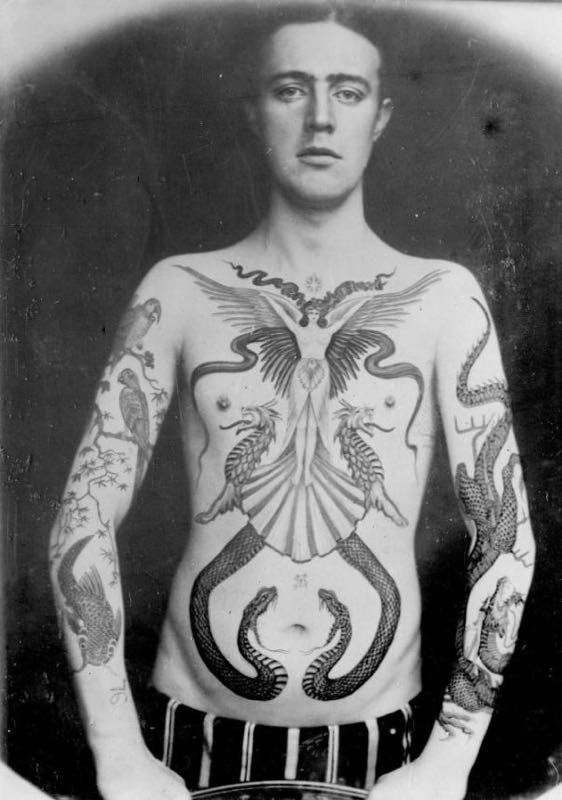
While more and more people – even the royal family – became a big fan of tattoos, this way of self-expression still remained linked with criminality and tattooed people were judged as disreputable and outcast.
The Tattoo Renaissance began in the late 1950s, and was greatly influenced by several artists in particular Lyle Tuttle, Cliff Raven, Don Nolan, Zeke Owens, Spider Webb and Ed Hardy.
In many respects, Lyle Tuttle represents the beginning of the tattoo Renaissance: he founded the Tattoo Art Museum and Hall of Fame in San Francisco and publishes the Tattoo Historian. As the commercial art world and academic art historians take notice of tattooing, gallery and museum showings increase. This tends to attract better trained artists, which in turn, leads to a new clientele. This new clientele consists of middle class teens and adults, college students, media celebrities and sports heroes.
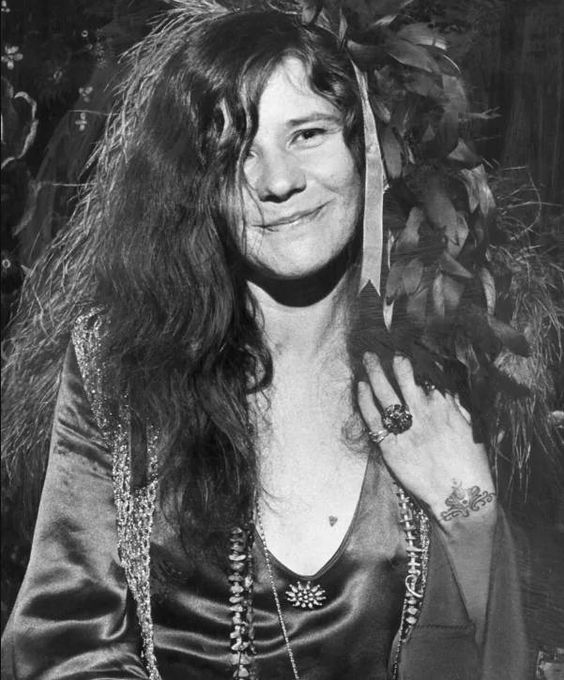
New social movements contributed to the fact that tattoos have taken on a different meaning for young people in the 70’s than for previous generations. The tattoo has “undergone dramatic redefinition” and has shifted from a form of deviance to an acceptable form of expression.
Photos and sources from:
https://www.pinterest.ie/pin/447545281711550133/
https://www.pinterest.ie/pin/408772103669078212/
https://www.pinterest.ie/pin/209839663870998488/
http://www.acrwebsite.org/volumes/8195/volumes/v25/NA-25
https://en.wikipedia.org/wiki/History_of_tattooing#cite_note-74
You may have heard a thousand times already: tattoos last forever, so you should choose carefully. But, no one is talking about the fact that tattoos are changing over time.
You may have heard a thousand times already: tattoos last forever, so you should choose carefully. But, no one is talking about the fact that tattoos are changing over time.
I’ve realized – way before I started my business, Dublin Tattoo Art – that people are often not aware that tattoos are changing, fading over years. If you’re planning to get a tattoo, you should be aware of this, and be prepared for it.
I know, it could be a bit disappointing, but just think about that our body is constantly changing, our cells are regenerating, so why would the pigments of tattoo ink under your skin remain the same?
You can do your best to keep the tattoo in the best condition as long as possible, for example with proper aftercare or just protecting it from the sun. Or you choose wisely, and get a tattoo on a body part where you can avoid frequent friction, and when it comes to designs, you rather go with larger pieces of black and grey tattoo, instead of choosing a small piece with bright colours. I know, watercolour technique is very popular nowadays, but believe me – those tend to fade quickly.
What your tattoo artist can do for you, is to work with quality inks, to give advice and ensure precision, that your tattoo is placed to the right layer of your skin.
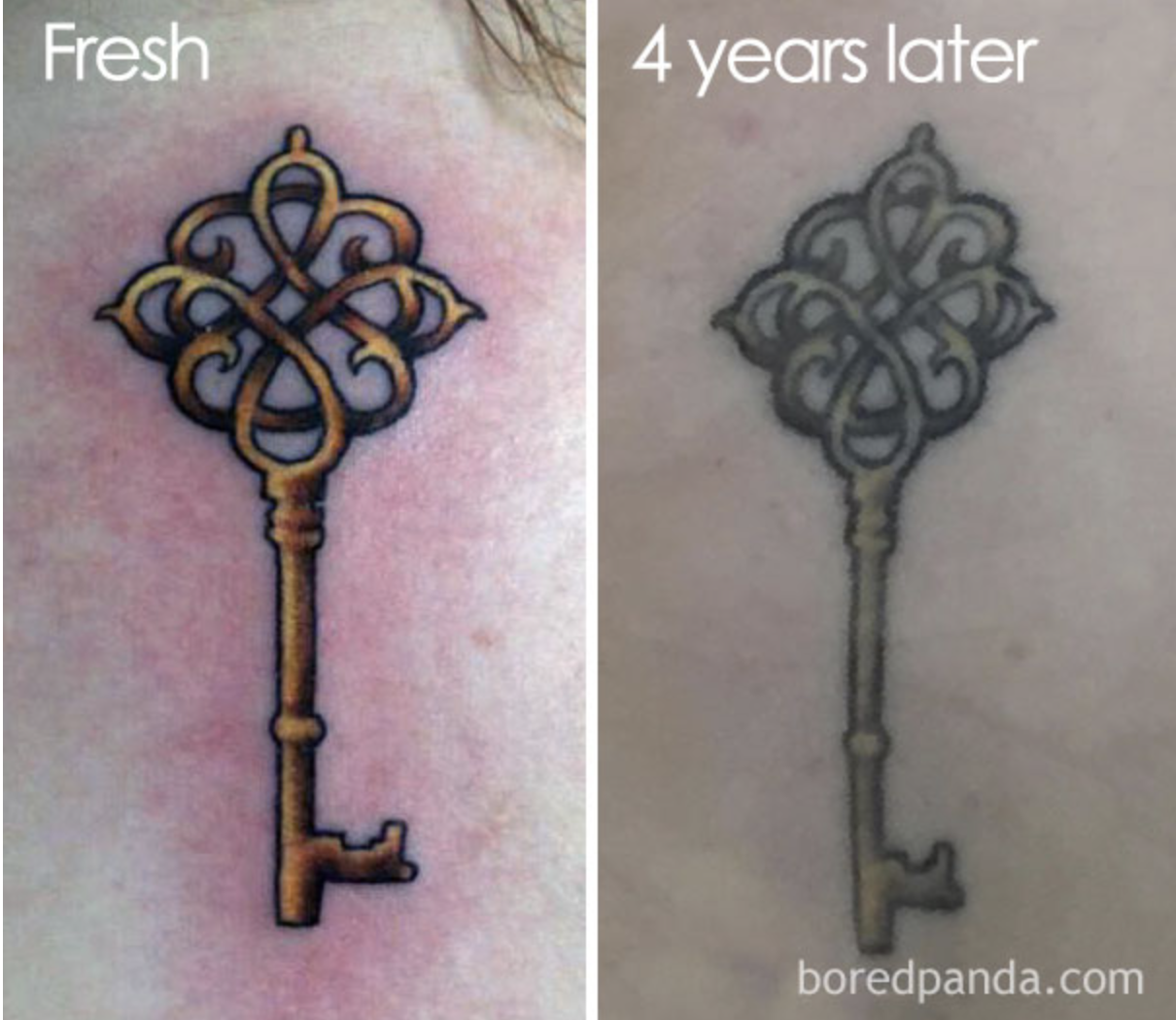
The idea for this article came from: https://www.bustle.com/p/7-tattoos-that-actually-look-better-as-you-age-according-to-tattoo-artists-11941315
The three main reasons why you should never get a tattoo.
I’m sure that other tattoo artists could add more reasons to the list, but I would highlight those examples which I have come across to most of the time.
While there are several reasons why someone would like to get rid of a tattoo, the most common reason is that people’s perception, style and taste is changing. Getting a tattoo is something that you have for a lifetime, and you should choose very carefully what you commit to. It’s less likely to change your mind over time, if you choose something meaningful, than something trendy.
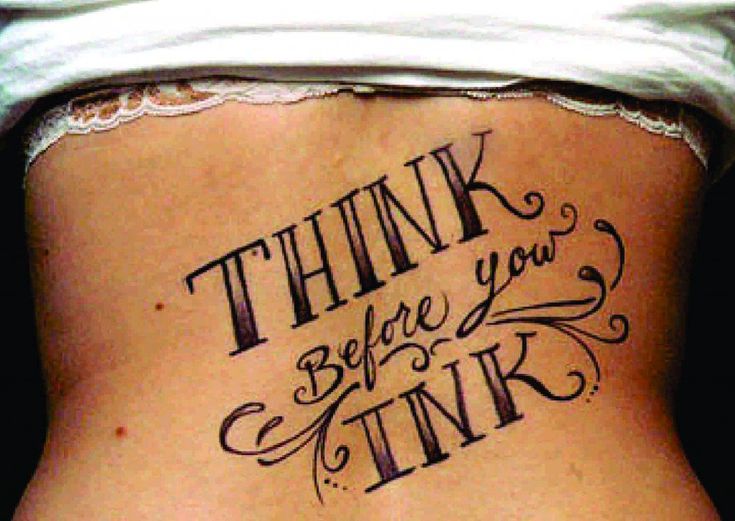
This is the type of customer that I meet a lot: not sure about the design, the size, or the body part they want to cover. Others are engaging with a design at first, then coming up with something totally different before the appointment. This is also the sign that you should better take your time and think about your future tattoo thoroughly.

Probably you’ve heard about Ariana Grande’s last tattoo failure about getting tattooed “small charcoal grill” on her hand, instead of “seven rings”.
Well, you should be aware that checking (or better double-checking), and the research on the correct spelling of a tattoo is on you, not the artist.

Photos: